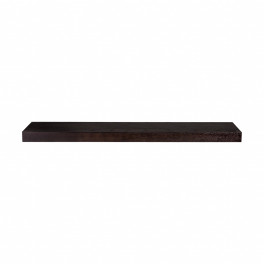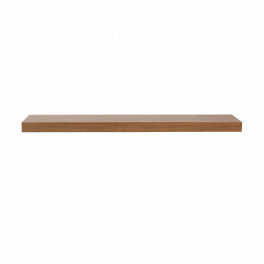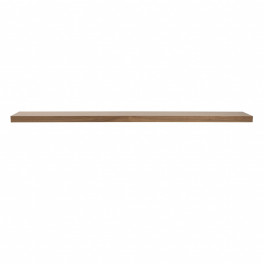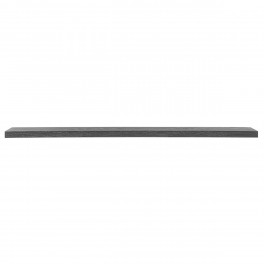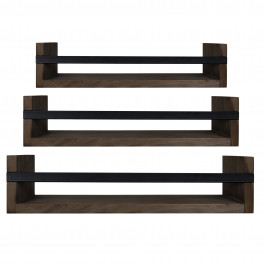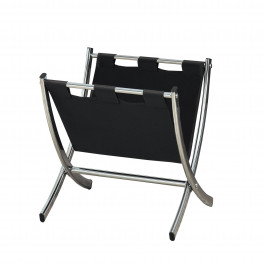Feeling like it's time to add a little more life to your home? There's an awful lot of options for plants that are easy to take care of and will live harmoniously with you indoors, but how do you pick? Below is a list of the best indoor plants, so take a look and find a plant that suits your style and your home!
Short and Stubby or Tall and Sprawling
1. Spider Plant
Spider plants are resilient and easy to keep around. These plants have long, thin, arched leaves spreading outward from their center. If they're left to grow unchecked, they can get a bit crazy and spindly. These plants are very easy to grow and with weekly watering and moderate light, they'll do just fine. They should avoid direct sunlight.
2. Aloe
Aloe is a great plant to have around the house. Unique looking and easy to care for, aloe loves indirect sunlight and a soak every week or so. They absorb carbon dioxide and release oxygen at night, so they're nice to keep in the bedroom.
3. Jade
Jade plants are succulent house plants that are fairly resilient and can last a very long time with the right care. Jade has thick stems and oval shaped leaves that look like a miniature tree. These plants require a fair amount of water—it is important to let them dry out and avoid overwatering them, as root rot can occur. A lot of sunlight is needed.
4. Mint
Mint is a nice addition to have in the home, especially if you enjoy the taste. Mint will require a lot of water and can take quite a bit of natural light as well. Keep tabs on the soil of the mint as it should always be evenly moist.
5. Snake Plant
Snake plants (also known as 'mother-in-law's tongue') are very hearty. They require very little water and don't need abundant sunlight. These plants like fluorescent light or bright, indirect light best. If in a window, they should be rotated a quarter turn every week. Know that chemicals in snake plants make it toxic to pets which may cause nausea and vomiting.
6. Rubber Plant
Rubber plants sport wide and broad leaves and can grow to be very tall! Regular pruning will keep them at a manageable size for the home. These plants like indirect, low light and must be kept moist. Note that the sap can be poisonous for pets and kids, and will cause irritation.
Spider plant, Aloe, Jade, Mint, Snake plant, Rubber plant.
Bushy or Flowering
7. Bamboo Palm
Bamboo palms bring the exotic feel of a tropical environment into your home. These plants should be kept moist, but avoid overwatering. They prefer indirect or filtered sunlight and if possible, place them in a southeast-facing window of your home. They will grow very well in bright indirect light, but can also be fine (but grow less) with low indirect light, as well. Without proper lighting, bamboo tends to lose a lot of fronds and become very stick-like.
8. Bromeliad
Bromeliad's are like the groovy plant version of a pineapple. They sport the same vertical outward reaching leaves, as they are both from the bromeliaceae family. These plants prefer warmer temperatures and should be kept from cold drafts. They require infrequent watering; test that the top 2 inches of potting are dry before watering again and allow for sufficient drainage.
9. Kalanchoe
Kalanchoe is a very beautiful flowering plant that has tiny bell shaped flowers and is pretty low-maintenance. While it does require frequent watering, it can withstand colder temperatures just fine. While kalanchoes can re-bloom after a season, they are considered disposable plants after they have flowered.
10. Golden Pothos
Golden Pothos are one of the most popular and easy to care for plants in the home. These plants don't ask for much: they can live in low light and are OK if you happen to miss the occasional watering. It's actually best to allow the soil to dry in between waterings. Their telltale sign for needing water is drooping leaves. The vines of these can grow up to 10-feet long and are considered an air-purifying house plant.
11. Ficus
Ficus plants are very popular in both homes and in offices. Requiring bright indirect light and occasional watering, they are easy to care for and provide great air purification. They also need moist soil from the occasional misting, but are otherwise very easy going.
12. Chrysanthemums
Chrysanthemums are very popular in the garden, so why not bring some inside? Mums are bright, happy, and simple to care for, so long as you have a bright spot and enough water. Avoid overwatering and be sure their pots can drain any excess water. It's best to check on the moistness of the soil daily and water them when the top 1 inch of soil begins to dry.
Bamboo Palm, Bromeliad, Kalanchoe, Golden Pothos, Ficus, Chrysanthemums.
Air, Ivy, & Orchid
13. Phalaenopsis Orchid
Phalaenopsis Orchids or moth orchids are native to Asian countries but can do well in your home too. These orchids need consistent moisture and like low light, and will sometimes take a bit of coaxing to bloom. They also do well in humid areas, so if you live in a very dry climate, take caution with your orchid.
14. Philodendron
Philodendron's are wonderful, easy going plants that require little attention. They are adaptable and thrive year round, with the right conditions. They don't require much light and really only need water when half of the soil appears dry. Allow the top inch of soil to dry between waterings and take note when the leaves droop. Should the leaves yellow, use less water. Interestingly, philodendron are one of the few house plants that can grow in just water alone!
15. English Ivy
English ivy is a lovely, easy to grow plant that does well in cooler temperatures and some humidity. Requiring only misting, this ivy also does well in pebbles and water. Its tendrils can grow quite long if let loose to grow. Use of a humidity tray is a good choice for these plants.
16. Peace Lily
Peace lily flowers resemble little white flags and can often grow quite high. Some varities of peace lilies will grow to around 16 inches tall, while others may go up to as high as 6 feet! These plants are fine with a bit of dry soil, though they prefer it moist. If not watered enough, their leaves may brown. High humidity suits them best, so misting or using a humidity tray is recommended. They need a well lit area, but should not be kept in direct sunlight.
17. Air Plant
Air plants are highly unique little plants that don't require potting, soil, or frequent water. Most air plants will need bright light but not direct sun. Being in direct sunlight will quickly deplete these plants of their moisture. Since air plants aren't stuck to being put in soil, you'll have to be creative with watering. Either rinsing them under a faucet or letting them soak in a bath for 20 to 30 minutes are appropriate ways to make sure that they receive all the hydration that they require. They are best suited to generally warm conditions and after rinsing, should sit out to dry in an area with good air circulation for about 4 hours.
18. African Violet
African violets are another incredibly popular houseplant that are beautiful and easy to care for. These require moderate to bright, indirect light and not a huge amount of water; only enough to keep the soil moist. It's best to let the soil around the roots to dry before watering again, to encourage blooming. These plants thrive at around 70 degrees, but no less than 60 or more than 80.
Phalaenopsis Orchids, Philodendron, English Ivy, Peace Lily, Air plant, African Violet.
Patterned & Vibrant
19. Peperomia
Peperomia, as the name implies come from the pepper plant family. There are many, many different varities of this family, which makes it easy to have a bunch of different looking plants while only needing to remember a single care routine for all of them. These plants do best in humid conditions and prefer moist but well-drained soil, as well as low to moderate light.
20. Dragon Trees
Dragon trees sound a lot more intense than what they are. These attractive little plants are known for having a red edge running along their long leaves, which is why they're also known by the name of 'red-edged dracaena'. They excel at purifying indoor air, require moderate to little sunlight, and should be dried out in between waterings. Note these plants are toxic to pets, so keep dogs and cats away.
21. Calathea
Calathea are striking and unique tropical plants and have nicknames like the peacock plant and the zebra plant, thanks to their colors and markings. Calathea also have small clusters of flowers in addition to their catchy leaves. These colorful beauties prefer indirect sunlight and fairly moist soil; though take care not to overwater as these plants tend to get bacterial or fungal diseases.
22. Dieffenbachia
Dieffenbachia have a unique speckily pattern to their wide, flat, leaves and are known to improve indoor air quality. These plants require low to moderate indirect light, and moist but not overly wet soil. In the right conditions, these plants can grow pretty tall (over 4 feet!) but make sure you rotate the pot, as they will reach out towards the light and this will help keep them straight.
23. Fiddle-Leaf Fig
Fiddle-leaf fig trees are wonderful and unique, can grow several feet tall, and have large, tear-drop shaped leaves protruding from their stems. These plants can grow fairly tall, about 6 feet if left untrimmed. This plant is also great for improving air quality and is safe for kids, though toxic to pets. It is suggested to fertilize this plant during the growing season, to help it along. It will do well in indirect, bright light, and should be allowed to completely dry in between waterings.
24. Gerber Daisies
Gerber daisies are bright and vibrant flowers that can instantly brighten up a room. These flowers need bright, indirect light, and not too much heat. During warmer weather, their soil should be kept moist. During cooler weather, it's best that the soil receive less water. Though gerber daisies are considered a disposable plant, they can survive a while if cared for properly.
Peperomia, Dragon tree, Calathea, Dieffenbachia, Fiddle-Leaf Fig tree, Gerber Daisy.
All of the Above
25. Cast Iron Plant
Cast iron plants are what you want if you don't have time to care for a more temperamental plant. These leafy greens are nigh-unkillable and require very little attention. They can survive in even the lousiest of conditions, whether that be poor quality soil, infrequent water, heavy rain, or bad sunlight. The leaves on cast iron plants can reach up to 2 feet high, while right around the soil's surface, small purple flowers can grow, though they easily get buried under the large leaves. Cast iron plants like a lot of water in dryer times and are fine with lower to bright filtered light. The top half of the pot's soil should be dry before watering again.
26. Cactus
Cacti are a universally loved plant staple for the home. Though not the cuddliest of plants, (if one can consider any plants truly 'cuddly') these prickly little guys come in all sorts of shapes, sizes, and colors. Best of all, they're pretty easy to care for and are long lasting. Cacti really only require a watering about once a week, though your mileage may vary. During cooler weather or in the winter, they may need less frequent watering. These plants require a lot of sun but should be kept out of direct sunlight.
27. Chinese Evergreen
Chinese evergreens are colorful and popular houseplants that are both diverse and easy to care for. Native to tropical forests, these plants thrive in filtered light to partial shade, and like humid environments. Direct sunlight should be avoided and watering should be done after allowing the soil to dry out, as excess watering can quickly lead to fungal problems.
28. Wax Begonia
Wax Begonias produce attractive pink, white, or red flowers and can have either green or reddish-bronze foliage, depending on the type. These plants are known to be tricky to grow from a seed, so it may be best to buy one from your local garden center. Wax begonias do well in full sunlight and should be fully drained after watering. When the top half-inch of soil is dried, they can be watered again. These flowers like it warm, dislike any drafts, and do well with soil that is light and fast draining.
29. Dwarf Azalea
Dwarf azaleas add a nice burst of bright color to your home. These plants thrive in an area that gets filtered sun and is cool. They are more accustomed to cooler temperatures, around 60-65 F. They should avoid direct sunlight. In terms of watering, these plants love water. You should avoid letting the plant dry out entirely; always keep them damp. These indoor varieties of dwarf azalea may benefit from the occasional full-dunk in water.
30. Dracaena Warneckii
Dracaena Warneckii are just one of the types of dracaena that make for good indoor plants. These plants have long green leaves, usually with a stripe along them and can be one foot tall, to twenty! They are hearty in nature and require little attention. Dracaena only need low light and minimal water. The soil of the pot should be mostly dry, all the way near the bottom before watering again. If your plant is in very low light, take care that overwatering does not occur, as this can negatively impact the health of your green friend.
Cast Iron plant, Cactus, Chinese Evergreen, Wax Begonias, Dwarf Azalea, Dracaena Warneckii.
If you've made it all the way down here, you can clearly see just how many options are available to you. What is important is to not only find a plant that speaks to you and fits your decor, but will also thrive in the environment you have placed it in. If your plant maybe isn't getting enough natural light in your living room, don't feel bad about moving it over to another spot. Be mindful of where you want to have your plant and be flexible if certain places in your home are not conducive to its growth. Let your home and environment dictate what kind of plant is the best fit and then narrow it down from there.





